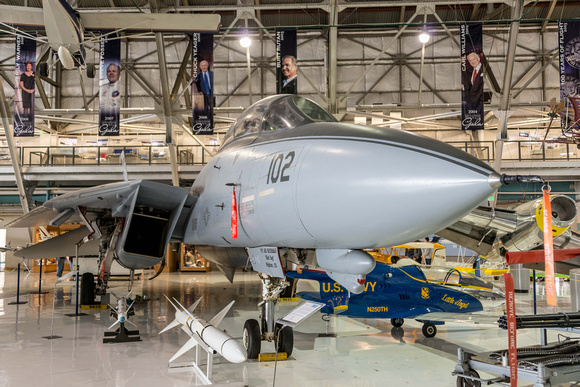1975 F14-A Tomcat
Manufactured by Grumman
Fighter
The Tomcat is a “variable geometry” aircraft in that the wings can be extended at right angles to the fuselage for takeoff and landing and can be swept back for cruise. The ship can move through the sound barrier and achieve a speed of Mach Two — or roughly 1,400 miles per hour. It can operate up to 500 miles from its carrier base.
The key to the success of the F-14 lies in its Hughes radar. This instrumentation can paint six enemy aircraft at a range of roughly 85 miles even though the craft are flying at different altitudes, different speeds and in different directions. The F-14 can then launch six Phoenix missiles at the six targets. Each Phoenix missile has onboard radar and can calculate its own intercept. Thus, the F-14 launches the ordinance, turns and goes home.
The F-14 can also carry multiple Sparrow air to air missiles which are guided by either radar or infrared sensing along with four sidewinder air to air missiles and both “smart” and “dumb” bombs.
The F-14 entered the Navy inventory in 1972.
The Tomcat performs many tasks but its principal job is to protect the carrier battle group. Flying with a second Tomcat and the E-2 Hawkeye with long range radar, the three ships constitute a combat air patrol which is in the air twenty four hours a day. The carrier battle group can consist of ten warships costing the taxpayers 15 billion dollars and manned with a crew of 10,000 sailors. This battle group can muster more firepower than the entire armed forces of England. Hence, extensive protection is required.


